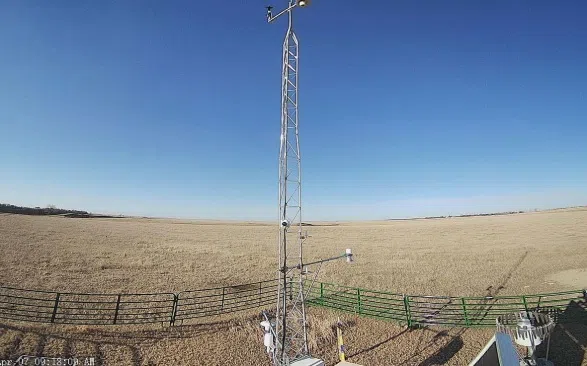
https://extension.sdstate.edu (Photo courtesy: South Dakota Mesonet)
Drought conditions across much of South Dakota have persisted since late last summer, through fall and winter with a lack of significant winter precipitation. In South Dakota, much of the state has received 50% or less than normal precipitation since October 1, 2024. Dormant precipitation is important to be able to recharge soil moisture and prepare for the spring green up.
According to the South Dakota Mesonet, many locations are experiencing very dry soil conditions even down to 40 inches. Looking at Lemmon specifically, the latter half of 2024 brought very dry soil (<10% moisture) in the top 8 inches. Even lower depths of 20 to 40 inches experienced < 20% moisture through the end of that year.
Looking at 2025 so far, the soil froze down to 50 inches when a cold snap hit in January, but began thawing out again in early March. When soils are unthawed, without cover, moisture can continue to deplete. Since thawing, Lemmon is already showing a decline in soil moisture in the top 4 inches from about 17 to 19% in early March to 13 to 15% in early April. Soil moisture remains around 9% at a depth of 8 inches, and 17% and 14% moisture at 20- and 40-inch depths, respectively.
Dry soil conditions combined with a lack of dormant precipitation typically indicate the need to reduce stocking rates or delay spring turnout. Given that many areas of the state are starting out the spring season with soil moisture behind the curve, many producers will need to adjust their management plans. At this point, we need above normal precipitation in April, May, and June to cultivate a normal growing and grazing season.
You can read the full article from SDSU Extension by clicking here.
By: Kaylee Wheeler, SDSU Extension Range Field Specialist




Comments